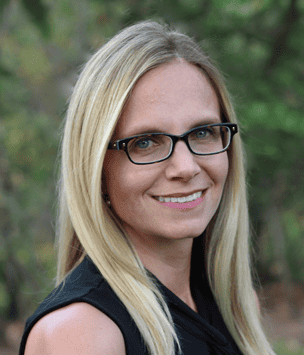Christina Curtis, Ph.D., M.S., is studying the information inside breast cancer tumors in patients at highest risk of relapse, or recurrence, to better understand which therapies will work best to treat the cancer and prevent recurrence.
Curtis was named a Komen Scholar in 2020 – an advisory group of distinguished leaders in breast cancer research, clinical practice, public health, advocacy and other relevant fields, who provide expertise and guidance to Susan G. Komen on research and other mission programs.
She recently spoke to Komen about the benefits of studying tumors – which include everything from predicting how a patient might respond to a therapy to paving the way for the development of more precise therapies with manageable side effects.

Q: What are you learning by studying breast cancer tumors in the lab?
A: My lab team has contributed to the identification of genomic subgroups of breast cancer which have helped with the identification of patients at very high risk of relapse from their disease. We’re invested in learning more about these high-risk subgroups, how we can potentially prevent recurrence, but also treat their breast cancers when it relapses. Part of the way we’re doing that is going into these high risk-of-relapse subgroups with new technologies and asking, “What can we learn about their individual makeup?” New technologies and tools allow us to probe individual cells within a tumor and peer into tumors in a way that we could not do before.
Q: How are patients benefitting from the knowledge you’re gaining when you peer into tumors?
A: We can use this knowledge to find ways to better personalize therapy. By profiling breast tumors, we can gain insight into the molecular features that determine whether a patient will respond to a given therapy and if not, why this is the case. Understanding why treatment fails is critical as it can provide clues as to new therapeutic targets. So, really, it’s the ability to learn how from the wealth of molecular information we can now measure in a tumor to determine its molecular state and the degree of heterogeneity, or variety of cells within a tumor that contributes to a patient’s prognosis and the likelihood of response to a therapeutic intervention.
For example, approximately 25 percent of patients with estrogen-receptor positive tumors (which account for ~75 percent of breast cancers), have a persistent risk of relapse from five years to 20 years after treatment. Given the elevated risk amongst these individuals, we are studying ways to reduce this risk by using new treatments.
Q: How does your lab research help patients in the clinical setting?
A: Our research has led to clinical trials investigating new therapies for patients at high-risk of relapse. We are also evaluating new therapeutic strategies in the lab, using pre-clinical models developed from patient samples. We collaborate closely with clinicians and industry partners to identify strategies to translate our discoveries into the clinical setting. We have to think about the continuum of development, from discovery to a target, to a drug, to a new treatment paradigm. As we think about how to move the needle, if we just focus on one aspect we may miss the forest for the trees.
Q: Studying and analyzing tumor makeup to determine treatment response has come a long way in the last 10 years. What do you think the field will look like 10 years from now?
A: I really believe that we’ll be in a place where we can better personalize therapy, minimize toxicities, and manage the patient journey in multiple ways. One is by appropriately defining a patient’s risk and tailoring therapies in a manner that is appropriate for that risk and in accordance with their molecular profile. And in that sense, I mean not only going after the drivers that may be genome defined, but we also need to think very carefully about the toxicities associated with these drugs, how to minimize them and mitigate their effects.
There are some ways that we can predict upfront if a patient may have intrinsic resistance to, let’s say, a chemotherapeutic agent or to a targeted therapy. We want to avoid those therapies and spare patients unnecessary toxicity if they will not benefit, and instead nominate a different therapy. We need better biomarker stratified therapies and that the work we’re doing paves away for this.
*Dr. Curtis is an Associate Professor of Medicine and Genetics at Stanford University School of Medicine and an Endowed Scholar. She is also the Director of Breast Cancer Translational Research and Co-Director of the Molecular Tumor Board at Stanford Cancer Institute and a Chan Zuckerberg Biohub Investigator.



